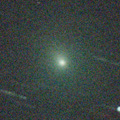
|
Now it is bright as 9.2 mag (Oct. 20, Juan Jose Gonzalez). It will approach to Earth down to 0.08 a.u. in December, and it is expected to brighten up to 3 mag. In the Northern Hemisphere, it locates low until November, but it stays observable in excellent condition after December. In the Southern Hemisphere, it is observable in good condition until mid December when it brightens up to 3 mag. But it becomes unobservable after that.
Date(TT) R.A. (2000) Decl. Delta r Elong. m1 Best Time(A, h)
Oct. 27 1 59.15 -32 32.3 0.303 1.226 134 8.6 23:36 ( 0, 22)
Nov. 3 2 0.30 -33 4.8 0.263 1.183 131 7.8 23:10 ( 0, 22)
|
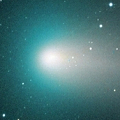
|
It brightened up to 6.8 mag in September (Sept. 17, Seiichi Yoshida). Now it is fading. It has already faded down to 10.1 mag (Oct. 20, Juan Jose Gonzalez). It is observable in excellent condition in the Southern Hemisphere. It will be getting lower gradually in the Northern Hemisphere.
Date(TT) R.A. (2000) Decl. Delta r Elong. m1 Best Time(A, h)
Oct. 27 7 23.72 -25 0.5 0.626 1.208 93 9.0 4:51 (357, 30)
Nov. 3 7 25.68 -29 14.2 0.674 1.261 96 9.5 4:38 ( 0, 26)
|
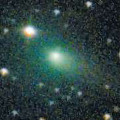
|
Now it is bright as 10.0 mag (Oct. 22, Marco Goiato). It stays 9-10 mag until January. In the Northern Hemisphere, it stays observable in good condition for a long time until it fades out. In the Southern Hemispehre, it is observable in good condition until autumn, but it will be low in winter.
Date(TT) R.A. (2000) Decl. Delta r Elong. m1 Best Time(A, h)
Oct. 27 6 58.83 17 19.9 0.970 1.600 109 9.5 4:38 ( 0, 72)
Nov. 3 7 14.89 19 9.9 0.921 1.592 112 9.4 4:27 ( 0, 74)
|

|
It brightened up to 7.7 mag in June (June 19, Juan Jose Gonzalez). Now it is fading. But it is still bright as 11.1 mag (Oct. 19, Chris Wyatt). In the Southern Hemisphere, it stays observable in good condition for a long time until the comet will fade out. In the Northern Hemisphere, it is not observable for a long time until autumn in 2019 when the comet fades out down to 16 mag.
Date(TT) R.A. (2000) Decl. Delta r Elong. m1 Best Time(A, h)
Oct. 27 14 45.44 -67 3.1 2.813 2.384 54 10.4 18:36 ( 27,-33)
Nov. 3 14 53.15 -68 47.0 2.861 2.415 54 10.5 18:30 ( 26,-35)
|
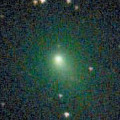
|
Now it is very bright as 10.3 mag (Oct. 22, Marco Goiato). It is observable in excellent condition in the Northern Hemisphere. It stays low in the Southern Hemisphere.
Date(TT) R.A. (2000) Decl. Delta r Elong. m1 Best Time(A, h)
Oct. 27 0 42.39 36 35.8 0.445 1.396 149 10.6 22:20 (180, 88)
Nov. 3 0 50.28 36 54.2 0.447 1.393 148 10.6 22:01 (180, 88)
|
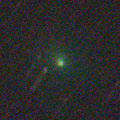
|
Now it is very bright as 10.8 mag (Oct. 12, Paul Camilleri). It stays at 10-11 mag until winter. In the Northern Hemisphere, it stays observable for a long time until it fades out. But it stays extremely low. It will never be observable again in the Southern Hemisphere.
Date(TT) R.A. (2000) Decl. Delta r Elong. m1 Best Time(A, h)
Oct. 27 16 10.13 0 48.6 2.512 1.777 34 11.2 18:36 ( 80, 15)
Nov. 3 16 24.52 2 15.9 2.504 1.755 32 11.1 18:30 ( 82, 15)
|

|
Now it is 12.2 mag (Oct. 6, Paul Camilleri). It stays 12 mag for a long time until spring.
Date(TT) R.A. (2000) Decl. Delta r Elong. m1 Best Time(A, h)
Oct. 27 8 57.04 3 56.1 2.906 2.870 78 12.2 4:51 (316, 50)
Nov. 3 8 53.41 1 36.6 2.808 2.897 85 12.2 4:56 (330, 53)
|
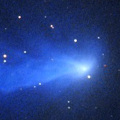
|
Now it is 11.0 mag (Oct. 20, Juan Jose Gonzalez). It will be fading slowly after this. In the Northern Hemisphere, it stays low until October. But it will be observable in good condition after that. In the Southern Hemisphere, it is not observable until summer in 2019.
Date(TT) R.A. (2000) Decl. Delta r Elong. m1 Best Time(A, h)
Oct. 27 13 26.39 44 3.9 3.577 3.154 57 12.3 4:51 (230, 21)
Nov. 3 13 41.79 43 18.4 3.585 3.194 59 12.3 4:56 (233, 24)
|

|
It must have brightened up to 13 mag in October. But it is not observable at all.
Date(TT) R.A. (2000) Decl. Delta r Elong. m1 Best Time(A, h)
Oct. 27 15 4.91 -11 12.4 2.063 1.132 14 13.1 18:36 ( 80, -5)
Nov. 3 15 33.73 -11 42.3 2.087 1.162 15 13.5 18:30 ( 78, -4)
|
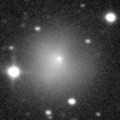
|
Now it is bright as 11.6 mag (Oct. 13, Maik Meyer).
Date(TT) R.A. (2000) Decl. Delta r Elong. m1 Best Time(A, h)
Oct. 27 22 45.53 -0 48.5 5.093 5.770 128 13.2 20:23 ( 0, 54)
Nov. 3 22 44.81 -0 55.7 5.185 5.770 121 13.3 19:55 ( 0, 54)
|
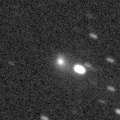
|
Now it is 13.5 mag (Oct. 11, Paul Camilleri). It stays at 12-13 mag for a long time until autumn in 2019.
Date(TT) R.A. (2000) Decl. Delta r Elong. m1 Best Time(A, h)
Oct. 27 21 27.04 -9 1.7 1.872 2.373 107 13.6 19:05 ( 0, 46)
Nov. 3 21 32.12 -9 3.8 1.928 2.346 102 13.5 18:43 ( 0, 46)
|
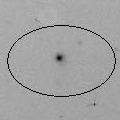
|
Now it is 13.7 mag (Oct. 11, Paul Camilleri). It will brighten up to 10-11 mag in autumn in 2019. It stays observable in good condition for a while in the Southern Hemisphere. In the Northern Hemisphere, it stays extremely low for a long time.
Date(TT) R.A. (2000) Decl. Delta r Elong. m1 Best Time(A, h)
Oct. 27 2 6.57 -46 46.2 4.138 4.722 120 13.8 23:42 ( 0, 8)
Nov. 3 1 56.46 -46 11.8 4.123 4.677 118 13.8 23:05 ( 0, 9)
|
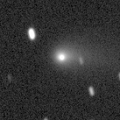
|
Now it is bright as 12.8 mag (Oct. 12, Paul Camilleri). It will be fading after this. It stays observable in excellent condition for a while in the Southern Hemisphere. It locates somewhat low in the Northern Hemisphere.
Date(TT) R.A. (2000) Decl. Delta r Elong. m1 Best Time(A, h)
Oct. 27 22 39.84 -26 10.0 1.443 2.091 117 14.0 20:18 ( 0, 29)
Nov. 3 22 45.73 -25 5.4 1.524 2.107 112 14.2 19:56 ( 0, 30)
|
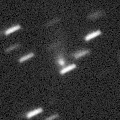
|
It brightened up to 8.7 mag in July (July 18, Marco Goiato). Then it faded down to 12.3 mag in August (Aug. 29, Chris Wyatt). Now it is not observable. It will appear in the morning sky in late December.
Date(TT) R.A. (2000) Decl. Delta r Elong. m1 Best Time(A, h)
Oct. 27 14 31.40 -26 0.9 2.829 1.886 14 14.0 18:36 ( 71,-20)
Nov. 3 14 44.45 -25 25.5 2.943 1.978 10 14.3 18:30 ( 73,-21)
|
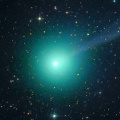
|
It brightened rapidly in outburst up to 6.9 mag (July 19, Maik Meyer). Then it faded down to 9.3 mag (Aug. 2, Katsumi Yoshimoto). It approached to Sun down to 0.2 a.u. in August, and it was expected to brighten up to 3 mag. However, it must have been already disintegrated. In the Northern Hemisphere, it is appearing in the morning sky. But it will be too faint to observe.
Date(TT) R.A. (2000) Decl. Delta r Elong. m1 Best Time(A, h)
Oct. 27 12 55.81 20 2.6 2.411 1.720 36 14.3 4:51 (255, 14)
Nov. 3 13 6.08 21 22.0 2.456 1.840 41 14.6 4:56 (257, 20)
|
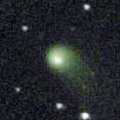
|
Now it is 14.0 mag (Oct. 7, Seiichi Yoshida). It stays 13-14 mag until summer in 2019. It is not observable now in the Southern Hemisphere. It will be unobservable in November also in the Northeren Hemisphere.
Date(TT) R.A. (2000) Decl. Delta r Elong. m1 Best Time(A, h)
Oct. 27 16 29.35 3 15.7 4.055 3.347 39 14.3 18:36 ( 79, 20)
Nov. 3 16 32.95 1 29.9 4.105 3.332 34 14.3 18:30 ( 80, 16)
|

|
Now it is 14.1 mag (Oct. 7, Seiichi Yoshida). It stays at 14 mag until winter. It is observable in excellent condition in the Northern Hemisphere. In the Southern Hemisphere, it is not observable until summer in 2019.
Date(TT) R.A. (2000) Decl. Delta r Elong. m1 Best Time(A, h)
Oct. 27 8 8.71 69 21.4 1.490 1.947 101 14.4 4:51 (189, 55)
Nov. 3 8 47.04 71 35.5 1.471 1.949 102 14.4 4:56 (188, 53)
|
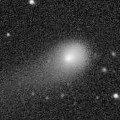
|
Now it is 14.3 mag (Aug. 17, Ken-ichi Kadota). It will be observable at 13-14 mag for a long time from 2017 to 2018. In the Southern Hemisphere, it will be hardly observable after this. In the Northern Hemispehre, it became low temporarily in September, but it will become high after this.
Date(TT) R.A. (2000) Decl. Delta r Elong. m1 Best Time(A, h)
Oct. 27 12 0.52 34 35.7 4.812 4.328 55 14.4 4:51 (248, 32)
Nov. 3 12 1.10 34 39.0 4.752 4.359 61 14.4 4:56 (251, 38)
|

|
Now it is 15.4 mag (Oct. 7, iTelescope Observatory, Siding Spring). It locates low. But it brightens up to 14.5 mag from October to November.
Date(TT) R.A. (2000) Decl. Delta r Elong. m1 Best Time(A, h)
Oct. 27 16 55.63 -24 41.3 1.244 0.838 42 14.7 18:36 ( 53, 7)
Nov. 3 17 33.87 -26 5.9 1.183 0.833 43 14.5 18:30 ( 49, 9)
|
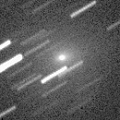
|
It approached to Earth down to 0.3 a.u., and brightened up to 8.3 mag in July (July 22, Juan Jose Gonzalez). Now it is fading. But it is still bright as 13.2 mag (Sept. 24, Thomas Lehmann). Now it is not observable. It will appear in the morning sky again in December in the Northern Hemisphere, or in January in the Southern Hemisphere.
Date(TT) R.A. (2000) Decl. Delta r Elong. m1 Best Time(A, h)
Oct. 27 15 13.83 -6 7.9 2.725 1.809 18 14.8 18:36 ( 83, 0)
Nov. 3 15 16.07 -5 51.5 2.822 1.876 14 15.0 18:30 ( 86, -4)
|

|
Now it is 14.5 mag (Aug. 16, P. Camilleri, H. Williams). It stays 15 mag from 2018 to 2019, and it will be observable for a long time in the Southern Hemisphere. In the Northern Hemisphere, it will never be observable again.
Date(TT) R.A. (2000) Decl. Delta r Elong. m1 Best Time(A, h)
Oct. 27 15 43.03 -68 14.0 4.452 4.013 57 15.0 18:36 ( 24,-28)
Nov. 3 16 7.89 -68 29.5 4.474 4.001 55 15.0 18:30 ( 24,-28)
|
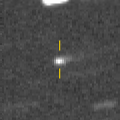
|
Now it is 15.6 mag (Oct. 13, D. Buczynski). Brightening very rapidly. It will brighten up to 14 mag from January to February, and it is expected to be observable in excellent condition.
Date(TT) R.A. (2000) Decl. Delta r Elong. m1 Best Time(A, h)
Oct. 27 9 3.21 16 4.6 1.547 1.683 79 15.4 4:51 (300, 59)
Nov. 3 9 20.72 14 27.8 1.480 1.666 82 15.2 4:56 (308, 60)
|
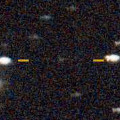
|
Now it is 16.5 mag (Oct. 4, I. Dulevich, S. Plaksa). It will brighten up to 13-14 mag in winter, and it will be observable in excellent condition. It locates low in the Southern Hemisphere.
Date(TT) R.A. (2000) Decl. Delta r Elong. m1 Best Time(A, h)
Oct. 27 9 39.46 28 40.5 2.293 2.268 76 15.7 4:51 (271, 58)
Nov. 3 9 53.30 28 20.4 2.202 2.250 79 15.6 4:56 (275, 62)
|
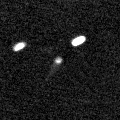
|
Now it is 15.8 mag (Oct. 13, S. Shurpakov). It will brighten up to 15 mag in winter. It is observable in excellent condition in the Northern Hemisphere. It is not observable at all in the Southern Hemisphere.
Date(TT) R.A. (2000) Decl. Delta r Elong. m1 Best Time(A, h)
Oct. 27 11 14.25 42 26.4 3.612 3.358 67 16.1 4:51 (242, 43)
Nov. 3 11 16.70 44 8.8 3.483 3.345 73 16.0 4:56 (241, 49)
|
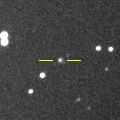
|
Now it is 16.0 mag (Oct. 11, C. Bell). It is expected to brighten up to 7-8 mag in 2020. In 2018, it will be observable at 15-16 mag in good condition from autum to winter.
Date(TT) R.A. (2000) Decl. Delta r Elong. m1 Best Time(A, h)
Oct. 27 3 47.45 -5 50.2 5.353 6.221 148 16.1 1:28 ( 0, 49)
Nov. 3 3 43.34 -5 57.7 5.265 6.162 152 16.0 0:56 ( 0, 49)
|

|
It brightened up to 7 mag from May to June in 2017. Now it is fading. It has already faded down to 16.0 mag (Sept. 30, J. Drummond). In the Southern Hemisphere, it stays observable for a long time after this. It will never be observable again in the Northern Hemisphere.
Date(TT) R.A. (2000) Decl. Delta r Elong. m1 Best Time(A, h)
Oct. 27 1 12.15 -54 11.4 5.305 5.756 112 16.5 22:48 ( 0, 1)
Nov. 3 1 6.63 -53 40.7 5.416 5.816 109 16.6 22:16 ( 0, 1)
|
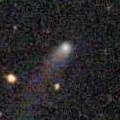
|
It brightened up to 14.7 mag in early 2018 (Jan. 25, Catalina Sky Survey). Now it is fading slowly. Now it is 16.1 mag (Oct. 10, I. Dulevich, S. Plaksa). In the Northern Hemisphere, it stays observable in good condition for a long time until the comet fades out. It is never observable again in the Southern Hemisphere.
Date(TT) R.A. (2000) Decl. Delta r Elong. m1 Best Time(A, h)
Oct. 27 8 23.71 60 38.3 5.653 5.884 98 16.5 4:51 (199, 62)
Nov. 3 8 21.12 62 8.2 5.581 5.905 104 16.5 4:56 (190, 62)
|

|
Now it is 16.4 mag (Sept. 29, Catalina Sky Survey). It is observable in good condition in the Southern Hemisphere. It locates somewhat low in the Northern Hemisphere.
Date(TT) R.A. (2000) Decl. Delta r Elong. m1 Best Time(A, h)
Oct. 27 22 46.88 -19 21.3 2.777 3.408 121 16.6 20:24 ( 0, 36)
Nov. 3 22 47.13 -18 53.2 2.880 3.423 115 16.7 19:57 ( 0, 36)
|
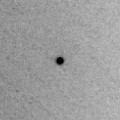
|
Now it is 16.2 mag (Sept. 13, ATLAS-MLO, Mauna Loa). It stays 16 mag for a while. In the Northern Hemisphere, it stays observable in good condition after this until it fades out. It is not observable in the Southern Hemisphere. Its cometary activity was observed on Mar. 26 (M. Mommert, D. Polishook, N. Moskovitz).
Date(TT) R.A. (2000) Decl. Delta r Elong. m1 Best Time(A, h)
Oct. 27 1 39.29 54 32.6 1.518 2.351 137 16.6 23:15 (180, 70)
Nov. 3 1 25.64 54 3.0 1.572 2.409 138 16.8 22:34 (180, 71)
|
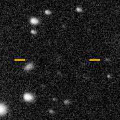
|
Now it is 17.0 mag (Oct. 12, C. Bell). It is observable at 16.5 mag in good condition from autumn to winter. It locates somewhat low in the Southern Hemisphere.
Date(TT) R.A. (2000) Decl. Delta r Elong. m1 Best Time(A, h)
Oct. 27 8 10.17 26 56.0 2.087 2.379 94 16.7 4:51 (298, 75)
Nov. 3 8 18.01 26 27.5 2.013 2.387 99 16.7 4:56 (317, 79)
|

|
Now it is 17.0 mag (Oct. 12, D. Buczynski). It stays 16-17 mag for a long time until 2020. It is observable in good condition in the Northern Hemisphere. It is not observable at all in the Southern Hemisphere.
Date(TT) R.A. (2000) Decl. Delta r Elong. m1 Best Time(A, h)
Oct. 27 11 5.83 67 47.4 8.479 8.477 86 16.8 4:51 (207, 44)
Nov. 3 11 14.13 68 0.9 8.412 8.473 90 16.8 4:56 (205, 46)
|
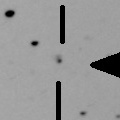
|
Asteroid, but it brightened rapidly. Now it is 16.4 mag (Oct. 9, P. Camilleri, J. Oey).
Date(TT) R.A. (2000) Decl. Delta r Elong. m1 Best Time(A, h)
Oct. 27 22 33.15 -45 42.8 6.447 6.770 104 17.0 20:10 ( 0, 9)
Nov. 3 22 27.19 -45 18.9 6.539 6.756 98 17.0 19:37 ( 0, 10)
|
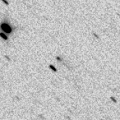
|
First return of a new periodic comet which brightened up to 16.5 mag in 2005. Now it is 16.3 mag (Oct. 15, S. Shurpakov). It will be observable at 17 mag in good condition in autumn. It locates low in the Southern Hemisphere.
Date(TT) R.A. (2000) Decl. Delta r Elong. m1 Best Time(A, h)
Oct. 27 1 52.39 32 38.0 1.146 2.107 159 17.0 23:29 ( 0, 88)
Nov. 3 1 50.29 31 12.6 1.157 2.120 161 17.1 23:00 ( 0, 86)
|
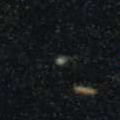
|
It brightened very rapidly. Now it is 16.7 mag (Oct. 12, Purple Mountain Observatory, XuYi Station). It seems to stay bright for a while.
Date(TT) R.A. (2000) Decl. Delta r Elong. m1 Best Time(A, h)
Oct. 27 23 52.81 -14 26.2 0.896 1.763 137 17.0 21:30 ( 0, 41)
Nov. 3 23 54.06 -12 50.2 0.942 1.768 132 17.2 21:04 ( 0, 42)
|
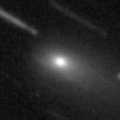
|
It brightened up to 12 mag from spring to summer. Now it is fading. It has already faded down to 17.1 mag (Oct. 8, Toshihiko Ikemura, Hirohisa Sato).
Date(TT) R.A. (2000) Decl. Delta r Elong. m1 Best Time(A, h)
Oct. 27 22 55.79 4 47.7 1.490 2.285 132 17.0 20:33 ( 0, 60)
Nov. 3 22 57.91 4 45.4 1.594 2.326 126 17.4 20:08 ( 0, 60)
|
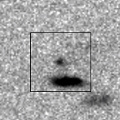
|
Now it is 17.5 mag (Oct. 10, D. Buczynski). It is observable at 17 mag in good condition in winter. It locates low in the Southern Hemisphere.
Date(TT) R.A. (2000) Decl. Delta r Elong. m1 Best Time(A, h)
Oct. 27 10 10.42 20 20.7 2.379 2.177 66 17.1 4:51 (278, 48)
Nov. 3 10 21.96 20 9.1 2.338 2.215 70 17.1 4:56 (283, 52)
|
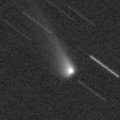
|
Now it is 17.0 mag (Oct. 12, ATLAS-MLO, Mauna Loa). Fading now. It stays observable in good condition for a long time after this in the Southern Hemisphere. It stays low in the Northern Hemisphere.
Date(TT) R.A. (2000) Decl. Delta r Elong. m1 Best Time(A, h)
Oct. 27 22 57.89 -39 30.7 4.520 4.982 112 17.2 20:35 ( 0, 16)
Nov. 3 22 51.29 -39 45.4 4.660 5.012 105 17.3 20:01 ( 0, 15)
|

|
Now it is 17.4 mag (June 6, Slooh.com Canary Islands Observatory). Fading slowly. It stays observable at 17 mag in good condition until summer in 2019.
Date(TT) R.A. (2000) Decl. Delta r Elong. m1 Best Time(A, h)
Oct. 27 11 25.63 6 4.5 10.522 9.826 43 17.3 4:51 (281, 25)
Nov. 3 11 28.47 5 56.6 10.445 9.835 49 17.3 4:56 (286, 31)
|
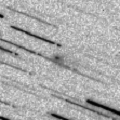
|
First return of a new periodic comet which brightened up to 17.5 mag in 2010. Now it is 18.1 mag (Oct. 13, J.-F. Soulier). It was expected to brighten up to 16.5 mag from November to December. But actually, it is a bit fainter than expected. It is observable in excellent condition in the Northern Hemisphere. It locates low in the Southern Hemisphere.
Date(TT) R.A. (2000) Decl. Delta r Elong. m1 Best Time(A, h)
Oct. 27 6 4.95 28 35.9 1.243 1.960 122 17.4 3:45 ( 0, 84)
Nov. 3 6 10.06 29 40.7 1.194 1.965 127 17.3 3:23 ( 0, 85)
|
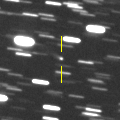
|
Now it is 18.1 mag (Oct. 13, W. Hasubick). It was observed at 17 mag in last winter. It will be observable in good condition at 17.5 mag also in this winter.
Date(TT) R.A. (2000) Decl. Delta r Elong. m1 Best Time(A, h)
Oct. 27 5 33.43 8 11.0 7.348 8.004 128 17.4 3:14 ( 0, 63)
Nov. 3 5 29.14 7 43.2 7.268 8.010 135 17.4 2:42 ( 0, 63)
|

|
Now it is 17.0 mag (Oct. 4, A. Diepvens). It will be fading gradually after this, and it will be fainter than 18 mag in winter. In the Northern Hemisphere, it stays observable in good condition for a long time. In the Southern Hemisphere, it will never be observable again.
Date(TT) R.A. (2000) Decl. Delta r Elong. m1 Best Time(A, h)
Oct. 27 22 36.87 74 3.7 7.339 7.767 112 17.4 20:14 (180, 51)
Nov. 3 22 36.97 73 11.5 7.352 7.794 113 17.4 19:46 (180, 52)
|
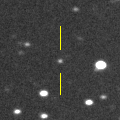
|
Now it is 16.6 mag (Oct. 7, Toshihiko Ikemura, Hirohisa Sato). It will be fading after this. It will be fainter than 18 mag in December.
Date(TT) R.A. (2000) Decl. Delta r Elong. m1 Best Time(A, h)
Oct. 27 21 40.23 -7 34.0 1.388 1.980 111 17.4 19:18 ( 0, 48)
Nov. 3 21 48.42 -7 19.3 1.440 1.967 106 17.5 18:59 ( 0, 48)
|
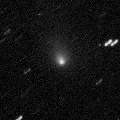
|
It brightened very rapidly up to 13.8 mag in August in 2017 (Aug. 22, Kunihiro Shima). Now it is 16.9 mag (Oct. 11, D. Buczynski). In the Northern Hemisphere, it stays observable in excellent condition after this. It will be observable also in the Southern Hemisphere in December, but it stays low.
Date(TT) R.A. (2000) Decl. Delta r Elong. m1 Best Time(A, h)
Oct. 27 10 9.77 28 48.1 2.631 2.476 70 17.5 4:51 (267, 52)
Nov. 3 10 21.35 28 55.2 2.575 2.501 74 17.5 4:56 (269, 56)
|
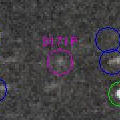
|
Now it is 17.9 mag (Oct. 10, Catalina Sky Survey). It will brighten rapidly. It was expected to be observable at 15.5 mag in good condition in winter. But actually, it is fainter than expected.
Date(TT) R.A. (2000) Decl. Delta r Elong. m1 Best Time(A, h)
Oct. 27 5 1.05 -7 46.4 1.100 1.910 131 17.7 2:41 ( 0, 47)
Nov. 3 5 1.12 -7 42.0 1.040 1.888 136 17.5 2:14 ( 0, 47)
|
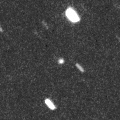
|
Now it is 17.5 mag (Oct. 6, K. Hills). It was observed at 18 mag in last winter. It will be observable in good condition at 17.5 mag also in this winter.
Date(TT) R.A. (2000) Decl. Delta r Elong. m1 Best Time(A, h)
Oct. 27 7 21.69 7 9.1 2.517 2.890 101 17.6 4:51 (354, 62)
Nov. 3 7 25.00 6 19.6 2.445 2.903 107 17.6 4:37 ( 0, 61)
|

|
Now it is 18.1 mag (Oct. 15, Kunihiro Shima). Although it is around the aphelion, it is observable at 17.5 mag in November, in good condition in the Northern Hemisphere. It locates very low in the Southern Hemisphere.
Date(TT) R.A. (2000) Decl. Delta r Elong. m1 Best Time(A, h)
Oct. 27 3 41.27 41 8.4 1.520 2.399 144 17.9 1:23 (180, 84)
Nov. 3 3 23.89 40 36.3 1.473 2.394 151 17.7 0:38 (180, 84)
|
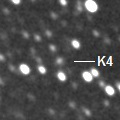
|
Now it is 17.7 mag (Oct. 1, Ken-ichi Kadota). It was observed at 16 mag from summer to autumn in 2017. It will be observable at 17 mag in good condition also in 2018. It locates somewhat low in the Southern Hemisphere.
Date(TT) R.A. (2000) Decl. Delta r Elong. m1 Best Time(A, h)
Oct. 27 0 39.43 28 21.1 2.941 3.863 154 17.8 22:16 ( 0, 83)
Nov. 3 0 36.56 27 45.3 3.015 3.909 150 17.9 21:46 ( 0, 83)
|

|
Now it is 17.9 mag (Oct. 6, D. Buczynski). It will be fainter than 18 mag in December.
Date(TT) R.A. (2000) Decl. Delta r Elong. m1 Best Time(A, h)
Oct. 27 5 11.74 2 20.6 7.075 7.781 132 17.8 2:52 ( 0, 57)
Nov. 3 5 10.20 2 5.1 7.041 7.815 138 17.8 2:23 ( 0, 57)
|
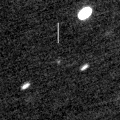
|
Now it is 17.9 mag (Oct. 8, W. Hasubick). It is observable at 17.5 mag until January, in good condition in the Northern Hemisphere. It locates very low in the Southern Hemisphere.
Date(TT) R.A. (2000) Decl. Delta r Elong. m1 Best Time(A, h)
Oct. 27 6 37.83 36 51.3 3.202 3.729 114 17.9 4:18 (180, 88)
Nov. 3 6 38.54 37 41.4 3.126 3.738 121 17.8 3:51 (180, 87)
|

|
Peculiar asteroid moving along a cometary orbit. Now it is 17.2 mag (Sept. 9, M. Jaeger, et al.). It is observable at 17.5 mag in good condition in November. It locates somewhat low in the Southern Hemisphere.
Date(TT) R.A. (2000) Decl. Delta r Elong. m1 Best Time(A, h)
Oct. 27 3 44.01 25 46.0 2.206 3.125 153 18.1 1:25 ( 0, 81)
Nov. 3 3 40.99 25 11.3 2.162 3.116 160 17.9 0:54 ( 0, 80)
|
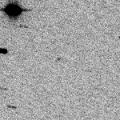
|
Return of a new periodic comet which brightened up to 17 mag in 2001. Now it is 19.2 mag (Oct. 12, K. Hills). It was predicted to brighten up to 17.5 mag from September to November. But actually, it is fainter than predicted by 2 mag.
Date(TT) R.A. (2000) Decl. Delta r Elong. m1 Best Time(A, h)
Oct. 27 1 41.15 -12 2.7 1.258 2.198 154 19.3 23:18 ( 0, 43)
Nov. 3 1 35.81 -11 2.2 1.285 2.204 150 19.4 22:45 ( 0, 44)
|
|
![]()
 29P/Schwassmann-Wachmann 1
29P/Schwassmann-Wachmann 1 78P/Gehrels 2
78P/Gehrels 2 C/2018 N2 ( ASASSN )
C/2018 N2 ( ASASSN ) 48P/Johnson
48P/Johnson C/2017 T3 ( ATLAS )
C/2017 T3 ( ATLAS ) C/2017 S3 ( PanSTARRS )
C/2017 S3 ( PanSTARRS ) C/2017 M4 ( ATLAS )
C/2017 M4 ( ATLAS ) (944) Hidalgo
(944) Hidalgo C/2015 O1 ( PanSTARRS )
C/2015 O1 ( PanSTARRS ) 300P/Catalina
300P/Catalina C/2018 N1 ( NEOWISE )
C/2018 N1 ( NEOWISE ) C/2017 B3 ( LINEAR )
C/2017 B3 ( LINEAR ) 60P/Tsuchinshan 2
60P/Tsuchinshan 2 123P/West-Hartley
123P/West-Hartley C/2018 A3 ( ATLAS )
C/2018 A3 ( ATLAS ) C/2017 T2 ( PanSTARRS )
C/2017 T2 ( PanSTARRS ) C/2015 V2 ( Johnson )
C/2015 V2 ( Johnson ) C/2016 A1 ( PanSTARRS )
C/2016 A1 ( PanSTARRS ) 65P/Gunn
65P/Gunn (3552) Don Quixote
(3552) Don Quixote 59P/Kearns-Kwee
59P/Kearns-Kwee C/2010 U3 ( Boattini )
C/2010 U3 ( Boattini ) A/2017 U7
A/2017 U7 368P/2018 L3 ( NEAT )
368P/2018 L3 ( NEAT ) P/2018 P3 ( PanSTARRS )
P/2018 P3 ( PanSTARRS ) 37P/Forbes
37P/Forbes 164P/Christensen
164P/Christensen C/2015 V1 ( PanSTARRS )
C/2015 V1 ( PanSTARRS ) C/2014 B1 ( Schwartz )
C/2014 B1 ( Schwartz ) 369P/2018 P1 ( Hill )
369P/2018 P1 ( Hill ) C/2015 XY1 ( Lemmon )
C/2015 XY1 ( Lemmon ) C/2014 OE4 ( PanSTARRS )
C/2014 OE4 ( PanSTARRS ) 137P/Shoemaker-Levy 2
137P/Shoemaker-Levy 2 240P/NEAT
240P/NEAT 171P/Spahr
171P/Spahr 361P/2017 S4 ( Spacewatch )
361P/2017 S4 ( Spacewatch ) (3200) Phaethon
(3200) Phaethon C/2017 K4 ( ATLAS )
C/2017 K4 ( ATLAS ) C/2011 KP36 ( Spacewatch )
C/2011 KP36 ( Spacewatch ) 159P/LONEOS
159P/LONEOS (37117) Narcissus
(37117) Narcissus 371P/2018 R1 ( LINEAR-Skiff )
371P/2018 R1 ( LINEAR-Skiff )![]()













































